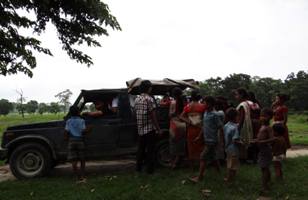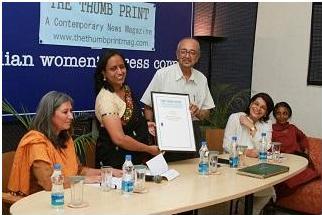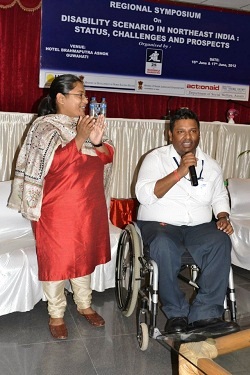Growing up in a staid, middle class environment in the heart of Guwahati, I knew precious little about the indigenous cuisine of Assam except my mother’s tangy fish speciality, Machor Tenga and the assortment of scrumptious rice cakes called Pithas, cooked by the women folk of our family during the Bihu festivities. And of course, Khar, that one of a kind concoction made of water and the ash of banana peel to prepare dishes that give the Assamese the unique appellation- KharKhowa Jati(the race of Khar eaters).
My parents, like all Assamese, swore by the benefits ofKhar. I grew up as a Khar Khowa to the marrow but my taste buds had remained largely unacquainted with our great indigenous cuisine. Only after 1992, when I joined the Assam Civil Service as a young man of twenty seven did I discover some of our region’s exciting culinary flavors and tantalizing tastes. As my peripatetic career took me from place to place, the richness and variety of our food culture unfolded before me. I saw how rice, the main stay of our diet used in an amazing range as a staple food; a snack and an alcoholic beverage. I marveled at the regional variations of our culinary preparations and preferences as one travels from the west to the east. If nothing pleases a host in Nalbari district more than offering his guests at dinner, pigeon meat cooked with banana flower, then for a host in Sivsagar district, it is duck meat cooked with white gourd.
The compulsion of my job to remain close to the people I serve, also allows me the opportunity of breaking bread with them as often as possible, setting me on that delectable journey of discovery of our region’s unique cuisine. I saw how the food habits and culinary preferences of our region contribute towards shaping its culture and traditions. What we eat tell us who we are.
During my first posting at Mushalpur, a remote decrepit township in the foothills of the Indo-Bhutan border with a predominant Bodo population, I broke my conservative family’s taboo on pork and drinks. At a community feast, organized on some occasion, I now no longer remember, and under the watchful eyes of my indulgent hosts, I sank my teeth into a succulent piece of Oma Bedor (pork meat) cooked with Lai Xaak (a leafy vegetable) followed by a generous swig of frothy Ju Mai, the traditional rice beer of the Bodos. As I savored every bit of that sumptuous repast in that remote Bodo village, I realized what I had been missing for so long. That feast was an eye opener for me. What I had picked up at Mushalpur, I followed up with Epicurean zeal in all my subsequent postings.
At Naharkatia, on the eastern part of Assam where I was posted next, I discovered the marked South East Asian influence in our cuisine. An exotic delicacy born of such a tradition, much popular among the Ahom community, is the protein rich Leta, the pupae of Eri, Muga and Pat silkworm. Leta lightly cooked goes well with Xaj, the traditional rice beer of upper Assam or its premier variety, Rohi. Another rare delicacy, I came across during my Naharkatia sojourn is the much sought after Aamroli Toop- the eggs of the red Aamroli ant. During the month of Bohag, the first month of the Assamese calendar, young men climb up trees where the Aamroli ants build their nests with the tree leaves. The young fellows carefully collect the white eggs from the nest, often enduring painful bites of the angry ants. Though Aamroli Toop is eaten throughout the year, it is customary to have it on the day of Goru Bihu during the Rangali Bihu celebrations. Aamroli Toop cooked with duck egg is a hot favorite amongst the locals.
Along with rice, the Assamese are great fish eaters. Besides the Brahmaputra and its tributaries, the innumerable ponds, beels and wetlands of Assam are breeding grounds of an astonishing variety of fishes of all sizes, shapes and tastes. In spite of the influence of the Bengali style of cooking in our fish based delicacies, the delightfully sour Machor Tenga stands on its own as an original Assamese culinary specialty. But more exotic fish based delicacies also form part of our region’s indigenous cuisine. A unique tradition of drying and preserving fish prevails in parts of upper Assam. The dried fish is pounded and the remains stored in tightly sealed bamboo tubes. Whenever the need arises, the sealed end of the bamboo tube is opened and the remains are used to prepare a dish known as Xukoti. During my posting in Gohpur subdivision, once on a visit to a Mishing village, I saw a similar method of preserving dried fish inside bamboo tubes. The dried fish is called Namsing. Though the fish tastes great, the pungent smell could put one’s appetite off.
In that same Mishing village, I also tasted the sweet smelling Purang- rice soaked in water and wrapped in leaves of the tora plant and boiled. During my Gohpur tenure, I was introduced toApong, the traditional rice beer of the Mishing community. Apong has two varieties, the whitish yellow Nogin and the pale greenish or transparent Poro. The latter prepared by using the ash of rice husk and hay with rice and an assortment of herbs is also popularly known as Sai Mod. What is unique amongst most tribal communities of our region is that each has its own variety of rice based alcoholic beverage. In my estimation, Poro Apong of the Mishingsis the finest rice beer of our region. A few years later, when I was transferred to Margherita, I spent many winter evenings with a Mishing friend of mine in front of the fireplace at my British type bungalow, rolling pork sticks over the glowing coals while sipping from our glasses of Poro Apong --- and offering solutions to all the problems of the world.
Margherita, named after an Italian queen, is one of the loveliest places of Assam, a region of unsurpassed natural beauty surrounded by the blue Patkai hills and nurtured by the Burhi Dehing River. It was here in the kingdom of the Singphos in 1823 that an enterprising Scotsman named Robert Bruce first discovered wild tea bushes, an epoch making event that gave the world that household brand: Assam Tea. Bisa Nong Singpho, a direct descendent of the Singpho chieftain who had handed the tea plants to Robert Bruce still lives in Margherita. I was privileged to know and be friendly with Bisa Nong Singpho, a wise and witty man and a respected leader of his community during my tenure at Margherita.
Seven kilometers from Margherita, tucked away in a small village called Inthong, amidst verdant tea bushes and lush green paddy fields, is a tourist lodge built like a Singpho chang ghar with all modern amenities. A brainchild of community leader Manjela and his wife Pratima, the eco-lodge is a tranquil haven for weary and stressed out persons to unwind and find their souls again. The place offers much food for thought- as well as the palate. One sits on the bamboo woven floor as an elaborate Singpho culinary fare with such delicacies as Sat Makai or Tupula Bhat (steamed boil rice ); Ushan Nphosi (chicken gravy with pounded rice); Washan Ping (roasted pork on a stick); Ngashan Sithu (fish chutney) and Speng Si (boiled vegetable stew) is laid out on low wooden tables. As the guests savor the dishes, Manjela and his wife hover over them showing, among other things, how the pieces of roasted pork in the Washan Ping should be gently rotated from their sticks and not pulled by eager fingers.
More than twenty years after the salad days of my first posting, I have seen so many changes in the lifestyles of our people but what remains unchanged is the food culture of the region with rice as the staple food. Also what remains forever standing out in bold relief is the truism that the Assamese are amongst the most hospitable people in the world. At times, hospitable to a degree of being irritable. Even in a remote village of Assam, a person, whatever his economic status, will not relent until his guest places his hands over the bell metal utensils to indicate that he has had enough and could not tuck in another helping of rice; and earnestly pleads, “No more please”







































